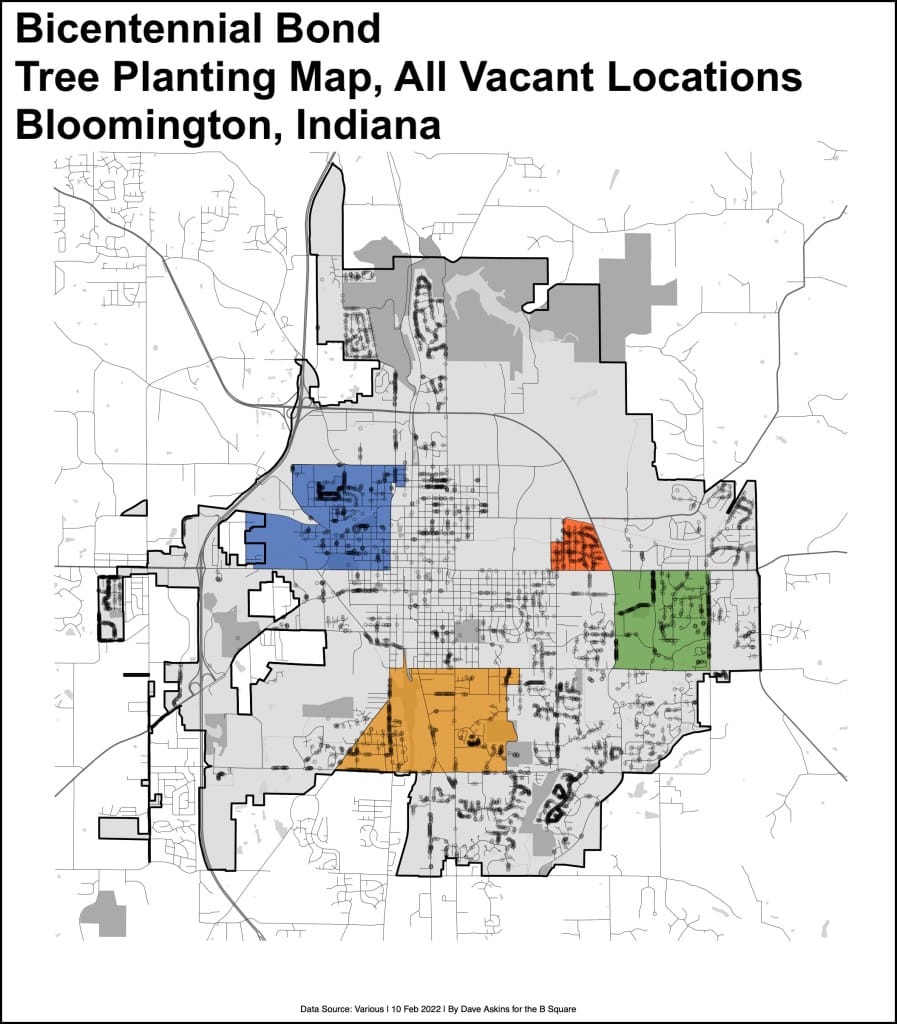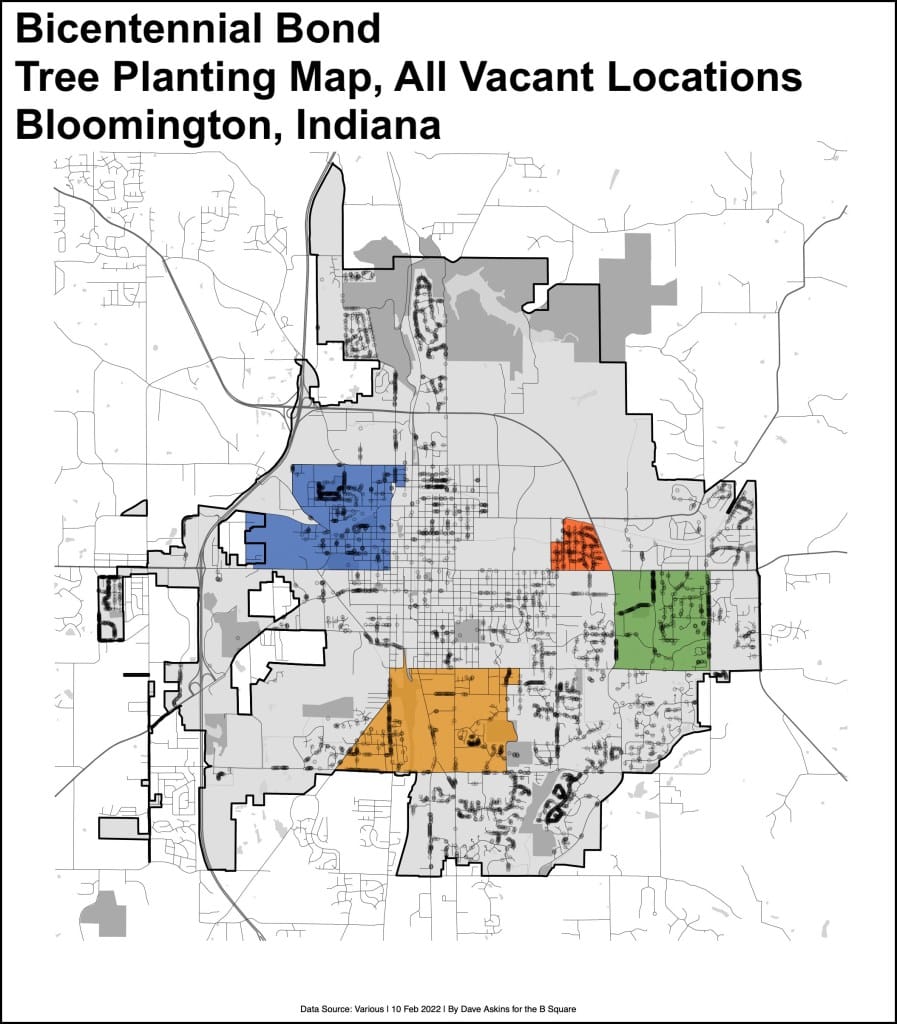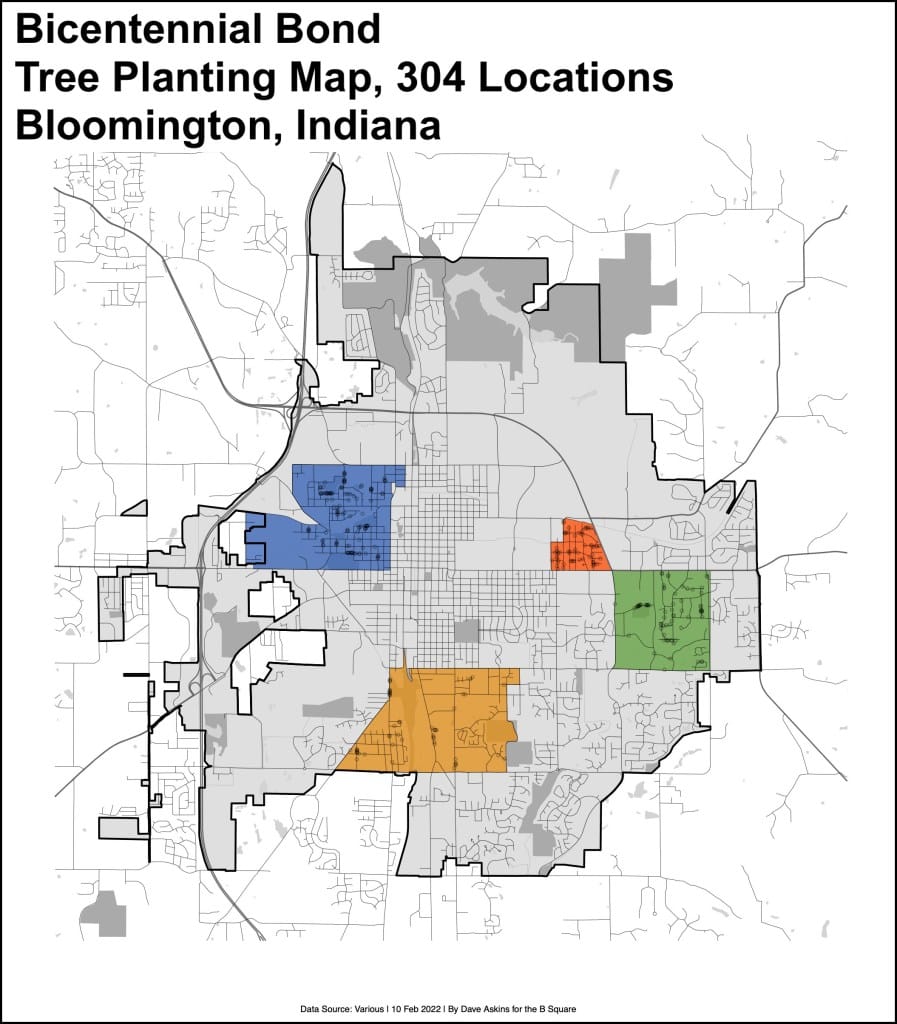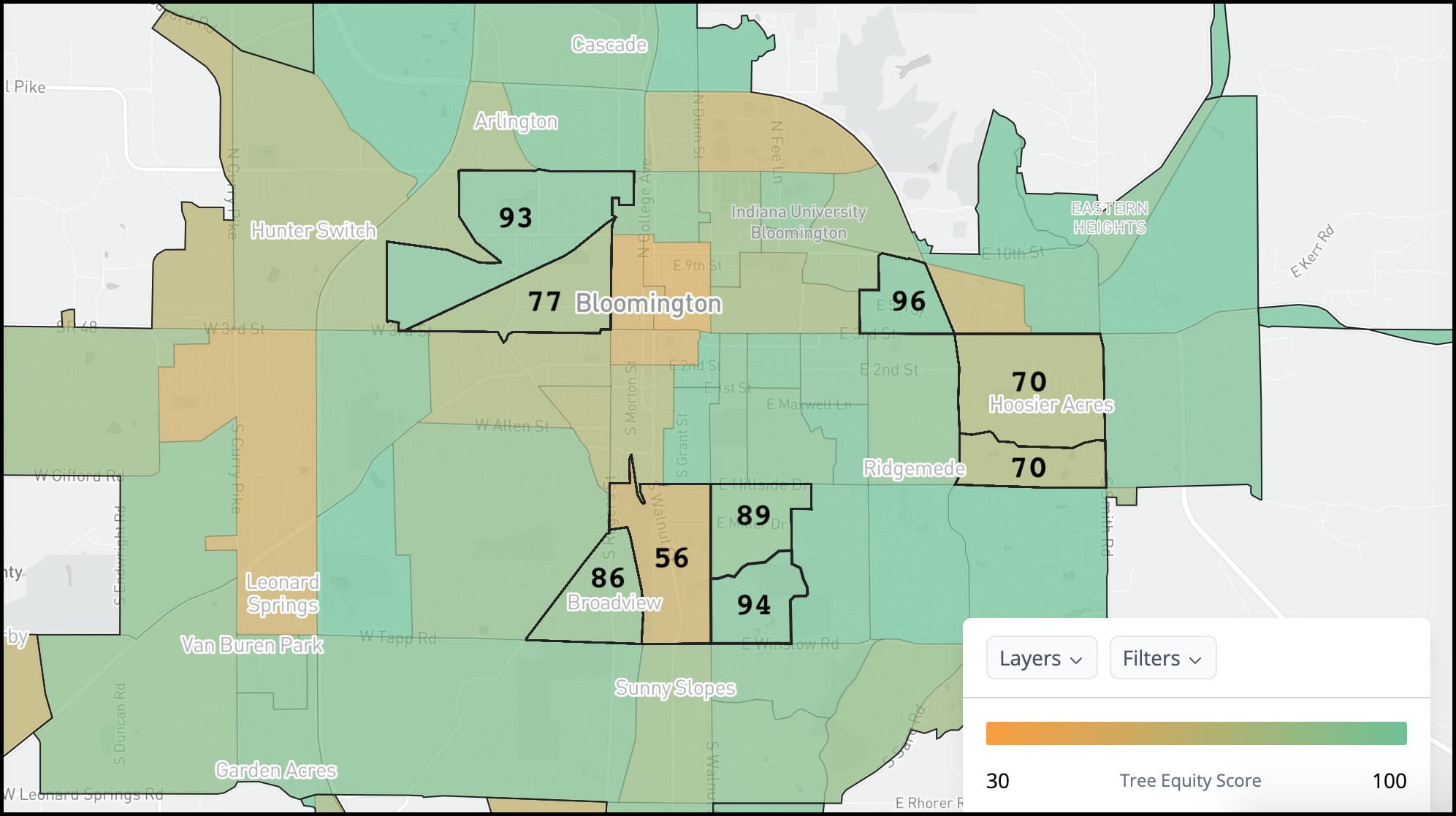Bloomington looks to carry out $800K plan for public tree planting in spring, fall 2022




This Friday, the city of Bloomington is hosting the first of two information sessions about its plans to plant $800,000 worth of trees in the public right-of-way, according to a news release from the mayor’s office on Tuesday.
It was a little more than three years ago when Bloomington’s city council approved the issuance of a series of bonds worth $10.27 million for several different projects. That was in 2018, Bloomington’s bicentennial year, so they were branded by Bloomington mayor John Hamilton’s administration as “bicentennial bonds.”
Among the projects was an $800,000 plan to improve the city’s tree canopy by planting trees in the public right-of-way. Since 2018, Bloomington has contracted with Davey Resource Group (DRG) for a tree inventory and analysis of Bloomington’s tree canopy. (The layer of leaves, branches and trunks of trees that block the view of the ground from above is called the “canopy.”)
The inventory is available as an online resource through Davey’s Treekeeper website. The analysis was delivered in fall of 2019.
One of the takeaways from that analysis is that the maximum tree canopy that Bloomington could achieve is 61 percent. Around the same time that the tree inventory was released, climate activists called for Bloomington to achieve 60 percent tree canopy, essentially maxing out Bloomington’s tree canopy potential.
The climate benefits of trees come in the form of greenhouse gas reduction, stormwater mitigation, energy savings, and air quality improvements.
At Friday’s information session, Bloomington urban forester Erin Hatch will be on hand to answer questions about when and how the trees will be planted, what species of trees will be planted, and where. The city is asking for feedback from the public by web form or by phone (812-349-3716). The deadline to submit comments and questions is Feb. 28.
Another date to keep an eye on is Feb. 22, when the board of park commissioners could be considering the contract with tree companies selected to do the planting. The planting could start as early as spring 2022 and would continue in the fall.
The $800,000 is not enough to put trees in every vacant tree plot in the public right-of-way. Based on Treekeeper data, Bloomington has 4,592 vacant spots for trees in the public right of way. Of those, the city has targeted 304, which are grouped into four different project areas.
The project areas were chosen based on the the Davey Resource Group study, and the U.S. Census American Community Survey.
The tree-specific criteria included existing canopy and potential canopy.
The census data included median income, and percent non-white population. That’s because nationally, areas in cities with more trees are linked to higher incomes and a higher percentage of white populations, according to Bloomington’s Tuesday news release. So the first phase of Bloomington’s current tree planting effort is focused on places identified by both their environmental and socio-economic characteristics, according to the news release.
According to Bloomington’s news release, the selection of project areas is corroborated by American Forests Tree Equity Scores, which means the project areas should have relatively low tree equity scores.
That checks out for both parts of project Area 2 (green on the city’s map), which have tree equity scores of just 77. It also checks out for some parts of Area 3 (blue) and Area 4 (orange) which have parts with scores of 77 and 56, respectively.
But Area 1 has a tree equity score of 96. Why target an area with a tree equity score of 96, when there are other areas of the city with significantly lower equity scores?
Bloomington’s urban forester Erin Hatch responded to an emailed B Square question about that by pointing to some additional factors—the number of places available to plant (vacant plots) and underground utilities.
About some of the areas that have lower equity scores Hatch wrote,“[I]n the downtown area, the three block groups highlighted on the Tree Equity Score have equity scores of 49, 52, and 54. However there are very few identified vacant sites identified in these areas.”
Hatch continued, “Another area of interest is the blockgroup in the south west, which includes Highland Village. Unfortunately this area has narrow tree lawns with underground utilities found within the tree lawn.” The “tree lawn” is the area between the sidewalk and the street.
What makes project Area 1 an attractive target for planting, Hatch wrote, is the number of vacant tree plots.
The planned planting locations for this project can be highlighted on the Treekeeper webpage by using the magnifying glass search icon in the left sidebar (not the one at the top of the page) and selecting the “quick filter” labeled “Bicentennial Bond Planting 2022.” The filter will turn the planting locations orange instead of green.
Zoom access information for Friday’s meeting is included in the city’s news release.




Comments ()